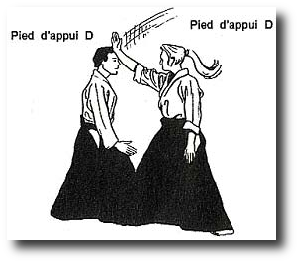Daito Ryu AikiJujitsu and Aikido have been at the core of my passion for martial arts for a good long time now. After having had trained in these systems for extended periods of time and continually cross trained in other arts, I have found some aspects of traditional training ultimately lacking for my needs as it is typically practiced.
The first and foremost problem I find in the way aiki arts are practiced is that we have ‘dumb’ attackers. Largely as an art form we program our partners to attack in predictable and illogical stylized fashion. On top of that we program them to react in over dramatic and unrealistic responses. Why? So we can make easy and pretty techniques on the attacker. I think many artists just want people to fall down, and not have to do the work of figuring out how to make them fall over.

To have simplified and stylized attacks has educational uses, but it must be seen as a tool to use and discard when the situation is appropriate. Rather than doing endless repetitions with a dumb attacker, it is far more valuable to exercise with an intelligent attacker who has permission to do smart reactions. We want to train the attacker to be doing aiki.
First and foremost as we advance we must make our partners better at attacking. It matters not if they are attacking with strikes, or entering in with throws. The attacks must be realistic and put into combinations. Why is it so rare to see an aiki artist’s deal with combinations of punches from a boxer? Why does the tanto attacker simply stick his knife into the air then cleanly take a fall?
In juggling there is a saying, “if you are not dropping the ball, you are not learning.” I think aiki is the same way, if you find you are being successful at a high ratio, it doesn’t mean to have found Ueshiba’s enlightenment. It might mean it is time to turn your attacker’s difficulty level up from stupid to moderate.
Do you know the craziest thing happens when you turn the attacks up to realistic and you take the time to solve the problems you encounter? You get better.
What are some things do to make our attackers better and more dangerous?
• Learn striking/attack combinations and entries.
• Add feints into the attackers skill sets
• Make sure the attacker is genuinely trying to get his prey.
• Develop the spirit of attack as a legitimate form of aiki practice.
• Give them a training weapon and give them permission to get to work. Most people will be able to bring even a skilled martial artist to a failure point. Then dial it back once you learn the edge educational and failure speed.
• Let them strike even when you are busy clumsily working on a wrist lock.
• As skills develop let the attacker take advantage of errors and create technique himself.
• Let your attacker continue to be dangerous when he is on the ground.
• Practice from less than ideal situations. You are not going to always be at the correct distance or even standing up.
• Learn to do aiki with other parts of your body. It isn’t confined to your hands while you are standing.
• Finally, stop being so damn stylized! Question what you have been taught and shown. Grow and develop. Don’t replace critical thinking and exploration with the idea repetitions of mindless kata will magically make you grow.









